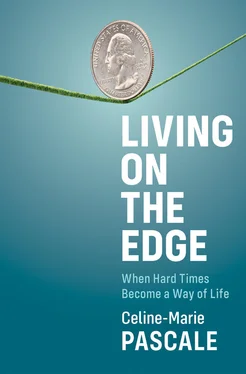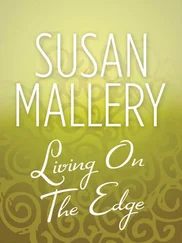The painful truth is that across the United States millions of families work multiple jobs in an effort to make ends meet. They try to pick up extra hours or skip meals to patch through every month on an income that is inadequate and often unreliable. For these families, there are no savings to cover even ordinary expenses – car repairs, a dental problem, or an illness. Faced with economic instability and risk, they often live with poor health, no health insurance, insecure or inadequate housing, and debt. This is not the “other America” that Michael Harrington described in 1962. This is the reality across the United States today. In 2018, national polls showed between 65% and 80% of the US population was living paycheck to paycheck. 2Before the pandemic of 2020, 43% of households – 50.8 million – were unable to afford a basic monthly budget for housing, food, transportation, child care, health care and a monthly smartphone bill. 3There are 353 counties in the United States with poverty rates that have been above 20% for three consecutive decades. 4The shocking reality of this level of economic distress is that it has not happened by accident . It has not happened in just one part of the country. And it has not happened because of one or two administrations. It is the result of decades of collusion between business and government to maximize corporate profits at the expense of workers.
In 2020 the federal poverty line for a single individual was an annual income of $12,760. As we will see throughout the book, given the costs of living, an income of $12,760 does not mark the beginning of poverty for anyone. Much of what we learn about wealth and poverty – about class – is skewed. Not only does the government’s unrealistic definition of poverty undercount the numbers of people who are struggling, it also makes their struggle more dire since the federal poverty line is used to determine eligibility for all forms of public support. The economy comes into sharper focus if we account for economic self-sufficiency based on the cost of living, rather than relying on the federal poverty line. This framework helps to explain why so many people are unable to afford a $400 emergency, and why in any given month one-in-five adults are unable to pay their bills in full. 5The economy is said to be strong when the stock market is doing well, but 84% of the market’s value is held by the richest 10% of the population. 6The nation misses working families every which way it looks.
Just what does the reality of economic struggle look like in the lives of ordinary people? I took a year to travel the country and talk with people who live in economically distressed communities. I listened to people in Appalachia, from southeastern Ohio to the coal fields of Eastern Kentucky and the Cumberland Plateau of Tennessee. I listened to people living on the Standing Rock Sioux Reservation that spans North and South Dakota, and to people living on the Wind River Reservation in Wyoming. I listened to people living in the poor communities of the bustling city of Oakland, California. I listened to anyone who would talk with me. In all, I talked with over a hundred people and conducted in-depth, recorded interviews with twenty-seven. 7They are Native American, Black, Latinx, and White working women and men who were generous enough to share some very precious time with me.
They appear in Living on the Edge with names they created for themselves to protect their privacy. I have taken care to protect them as well by not identifying specific workplaces or the names of towns whose populations are quite small. As I followed the stories of people living in struggling communities, I researched the larger contexts around them. For example, when someone told me they had to take out a medical loan to pay for dental work, I researched the terms of the loans offered by lenders in their area. When someone told me they relied on a dollar store for groceries, I researched dollar stores.
The voices included here complicate dominant national narratives about inequality by making visible not only the lives of ordinary people but also the corporations who profit from their struggles. The book, then, isn’t just about particular people or places. It is about how business practices and government policies create, normalize, and entrench economic struggles for many in order to produce extreme wealth for a few. It is not just that wages are insufficient, housing is unaffordable, and health care often out of reach – it is that we have a system that cares more for wealth accumulation than for the well-being of its people, for the environment or even for the country itself. Living on the Edge looks at government policies and business practices that produce enormous profit for some people by keeping working people submerged in economic quicksand. 8Ultimately it is a book about power that has been leveraged by government and corporations at the expense of ordinary people.
With that said, the experiences of the individuals featured in this book are both central to and rooted in the places in which they live. For example, some things happen on and around Native American reservations that just don’t happen anywhere else. The same can be said of Appalachian communities and the poor neighborhoods of Oakland. But despite these differences, there are also important similarities. From the coal fields of Appalachia, to fracking fields in the Midwest, to lead-contaminated neighborhoods in Oakland, people live in life-threatening conditions of environmental degradation that often leave them without access to clean water. Substance abuse also troubles every community that I visited, and it always falls hardest in the lives and communities that have the least. In different ways, prejudice and violence also figure centrally, often surprisingly, across all narratives.
Across the country people in struggling communities are forced to make impossible choices from among a range of bad options. They might be forced to choose between taking on debt that they can’t afford or becoming unemployed. Or between borrowing thousands of dollars to have their teeth fixed or borrowing hundreds of dollars to have them pulled. They ask themselves, do I pay the electric bill or the phone bill? If I buy shoes for my child, can I also buy enough groceries? How do I manage meals among the family when the food is about to run out? A seemingly small trouble, like a broken taillight or a bad case of the flu, can trigger a cascade of events that results in the loss of one’s job and subsequently one’s housing. No one should have to expect a level of economic struggle like this.
Wage gaps are tethered to wealth gaps. As of this writing in 2020, the richest 1% of American households owns almost as much wealth as the bottom 90% of households combined ; the entire bottom half of America now owns just 1.3 percent of the wealth. 9As the rich have gotten richer, the poor have been amassing debt. 10Some people are getting very wealthy precisely because others have been made to endure low wages, high housing costs, underfunded education, systemic sexism and racism, and devastating levels of environmental contamination. As we will see, even the criminal justice system has been leveraged to support corporate profits. And then the pandemic hit. 11
If there was an initial sentiment that Covid-19 would affect everyone, it soon became clear that the pandemic both highlighted and exacerbated existing inequalities. While the nation’s billionaires increased their collective wealth by more than $1 trillion between the onset of the pandemic and the close of 2020, millions of people who had been living paycheck to paycheck suddenly faced unemployment. 12Even as the Walton family that owns Walmart made over $21 billion in the early months of the pandemic, the company continued to pay wages so low that even its full-time workers continued to qualify for food stamps.
Читать дальше












